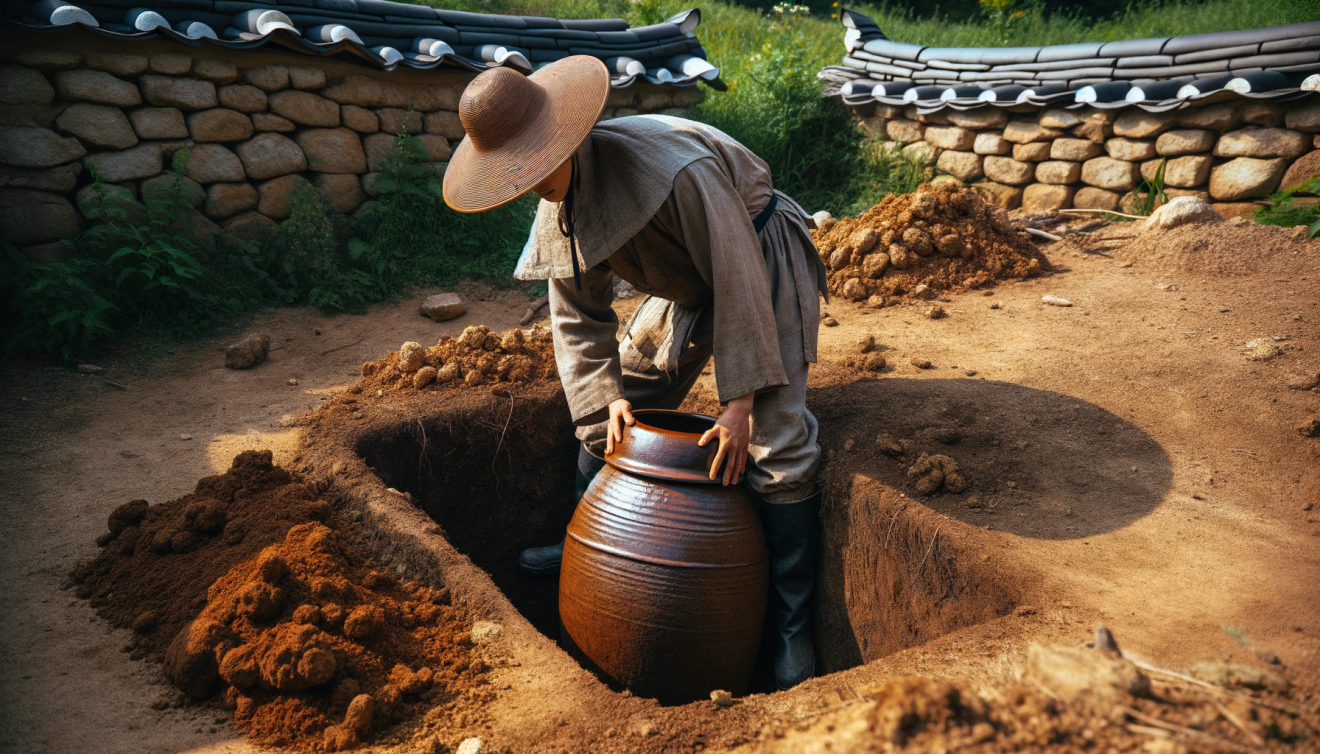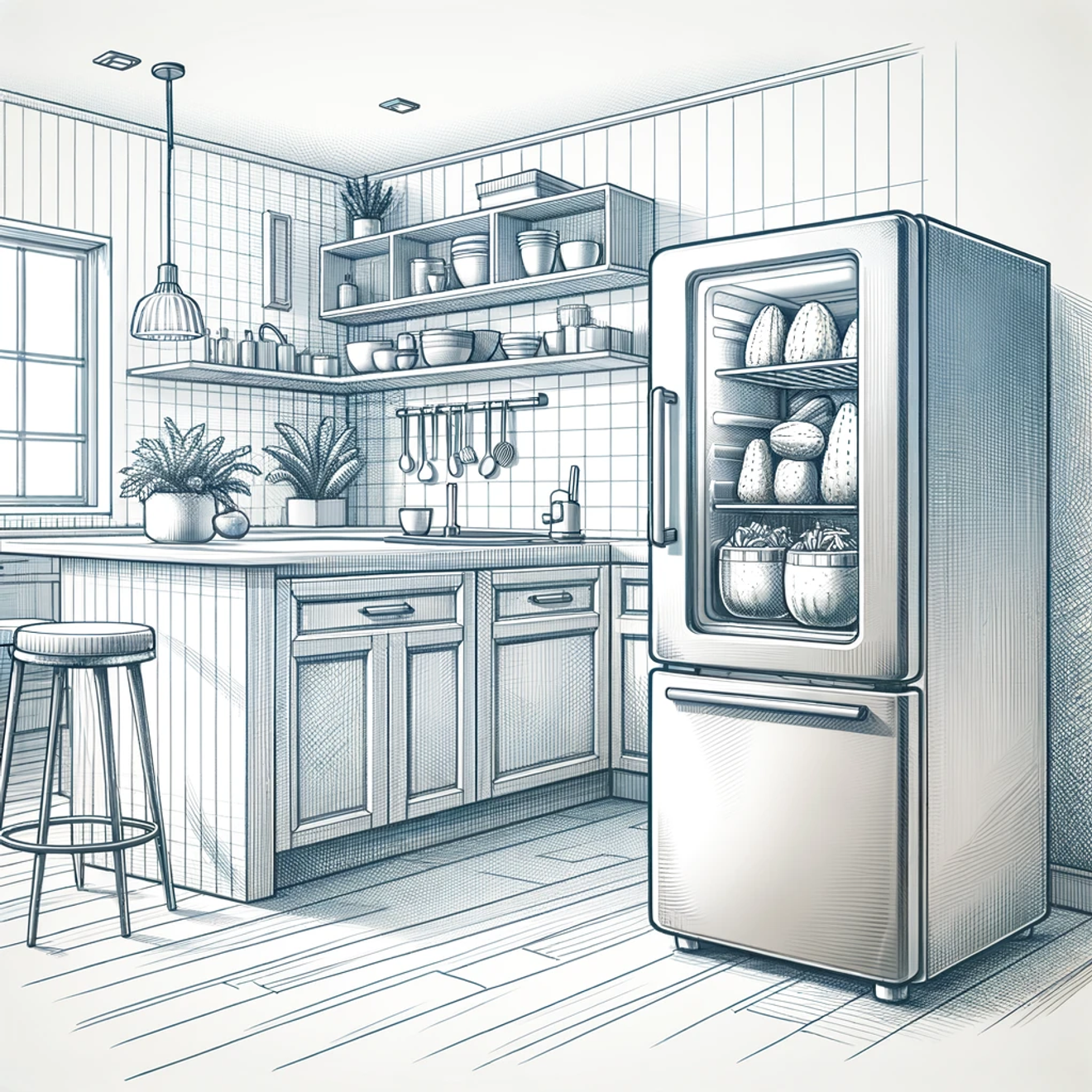Subject
- #Culture
- #Kimchi
- #Korean Traditional Culture
- #Kimchi Refrigerator
- #Korea
Created: 2024-03-09
Created: 2024-03-09 21:55
In Korea, there are separate kimchi refrigerators that primarily store kimchi.
If you're not Korean, you might not fully understand the origin of kimchi refrigerators. Let me briefly explain. First, we can't avoid talking about kimchi.
Kimchi started being called by various names, with records appearing during the Goryeo Dynasty (918-1392). Kimchi was stored in earthenware pots and buried in the ground. The reason for this is that Korea has distinct four seasons, and summers are particularly hot and humid, making it easy for kimchi to ferment too quickly or spoil.

Burying earthenware pots (jangdokdae) in the ground
Not only in summer, but also in winter, there was a risk that fermentation wouldn't occur properly due to excessively cold temperatures.
For this reason, kimchi was placed inside earthenware pots, and the pots were buried in the ground. The purpose was to maintain a constant temperature throughout summer and winter.
In the past, Korea had many detached houses, but nowadays, most people prefer apartments. The reason for preferring apartments is... I'll explain that another time.

Numerous earthenware pots (jangdokdae) in a Korean traditional house (hanok)
Detached houses had front or back yards where they could dig, but apartments are communal spaces, so digging is not allowed. So, initially, kimchi was stored in refrigerators.
Due to the salt content, kimchi sometimes doesn't freeze even at -1 to -2 degrees Celsius (30-28 degrees Fahrenheit), and maintaining this temperature range is crucial for preserving the taste of kimchi. This led to the use of dedicated kimchi refrigerators.

Various kimchi refrigerators from LG Electronics (both are currently sold)
Referring to the attached image above, the left image shows the traditional kimchi refrigerator that was initially developed and has been widely used for a long time. The right image shows the newer style that is now preferred.
Unlike regular refrigerators, stand-up kimchi refrigerators have many additional features to prevent the cold air from escaping all at once, such as compartmentalization and cold air retention capsules.
Also, the top or bottom compartment is often used as a regular refrigerator. In essence, it's used as an auxiliary refrigerator.

Illustration of a refrigerator in a home
Although the initial purpose was for storing kimchi, they are now highly regarded as auxiliary refrigerators. For instance, in the past, kimchi refrigerators sold well in October before kimchi-making season (Kimjang), but now they sell consistently throughout the year.
Besides kimchi, they are also used for storing vegetables, fruits, meat, beverages, alcohol, and more. They are also used for aging sashimi (raw fish), and thawing frozen meat/processed foods and seafood with minimal damage.
By the way, many people also store soju (Korean liquor) in kimchi refrigerators. It reaches a very delicious temperature, haha!
Comments0